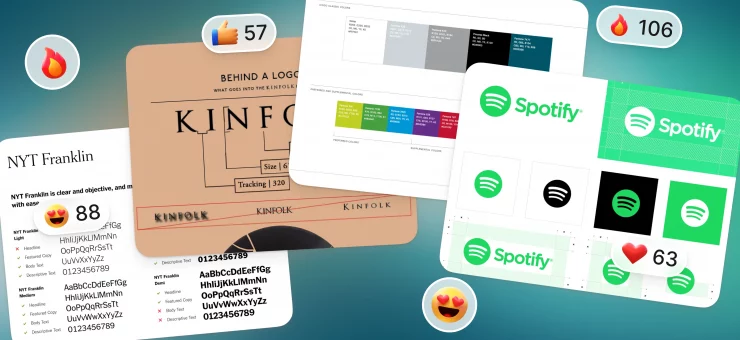Check the list of basic steps and top tactics that will make your website user-friendly and converting.
We are living in a digital world where the average person spends more than six hours online. It translates to the internet having massive potential for your business brand and what better way to advertise your business than having your website. Having a website is just the first of many steps you have to take. Optimizing your website user experience is an essential part of solving challenges that different visitors face.
Google promotes sites in organic search results that offer the best user experience. The recent Page Experience Update announcement from Google shares insights on how UX improvement can drastically improve your site’s organic rankings on the search engines.
In this article, you’ll learn what user experience is, why positive user experience is essential, and what basic tactics can be used to optimize your website user experience. Let’s start!
What Is User Experience?
User experience is the behavior that website visitors show when interacting with a website and the feelings they have doing it. You need to have an understanding of what the user is going through and make their experience positive and useful.
You have to consider your user’s needs and assess how best to serve them. What you definitely don’t want is losing potential clients within the first few seconds of them visiting your website.
User experience consists of optimizing seven elements on your site:
- Your website should be accessible
- Your content should be valuable
- Your advice or product should be useful
- Your website should be desirable
- Your website should be easily findable via search engines
- Your product should be usable
- Your business should be credible
Having a superior user experience has significant benefits such as driving lead generation, improving your search engine optimization, boosting conversion rates and increasing sales volumes.
It’s vital to make sure you meet some basic needs of your website visitors and answer basic questions such as:
- What is the visitor’s first impression of your website? Needless to say, it should be positive.
- How simple is the payout process on your website? The payout process should be flawless.
- What is the average time that users spend on your website? Users should be able to find your product or service as soon as possible.
- How frequently do they come back? You need them to come back regularly. Start a blog, announce new features to your audience, provide interesting updates so that they keep coming back.
Why Positive User Experience Is Important?
Every business goal is to stay ahead of the competition. Website users take about five seconds maximum to find what they want on your website before they leave. That is a short period that you have to gain the user’s attention. About 68% of website users leave a site because of poor-design and bad user experience.
Your website’s success depends on how users interact with it, and optimizing for user experience is vital to meet consumers demanding needs in a highly digitized world. When optimizing your website’s user experience, you need to ensure your website is useful, usable, findable, desirable, valuable, credible, and accessible.
Here are some benefits of optimizing your website user experience:
- You will be able to provide a positive user experience that creates customer loyalty in your brand and product.
- Positive UX enables you to focus on having an in-depth understanding of your customer’s needs, values, abilities, and limitations when interacting with your site.
- Optimizing your website improves the quality of the user’s interaction.
- You can track your customer’s journey and learn what works and what doesn’t.
- You can deliver an engaging, personalized, and responsive user experience to your customers.
- Turn prospects into leads and leads into customers, which increases your sales.
In this digital era, user experience optimization is key to having loyal customers that will let your brand grow.
Basic Tactics To Optimize Website User Experience
Here are some of the basic tactics to optimize your site for positive user experience.
Define Your Customer/User Personas
The most common mistake that novice businesses make is not taking the time to understand who their business personas are. A persona is the target group that your business is aiming to provide a solution to fulfill for them. You need to understand your market target group and classify them in groups to get a picture of who they are, their needs, and how to solve those needs. It is hard for your website to fulfill everyone’s needs. However, you can still attract the attention of the majority of the website visitors and study their behavior when they are on your website to understand what ticks. For businesses, especially for startups, knowing your target market is essential. Finding solutions that meet their demands depends on identifying your company personas, the people you want to serve. Instead of attempting to please everyone, concentrate on drawing in the vast majority of website visitors. Using a website feedback tools might be helpful before constructing your website. Building a website that appeals to and better serves potential clients allows you to obtain insightful information from them and learn about their preferences.
To define your business personas, you need to research your target audience and your current customers. Perform competitor analysis and identify the target audiences of your competitors. Don’t forget to use a VPN to track your competitors so that you don’t leave any digital footprints. What do they have in common? You can do this by calling some customers and asking them about the challenges they are having.
Here is an example of a user persona.
You may also send surveys by email and compare the similarities to the feedback. Customers with the same challenges can be grouped under one category and work on solving the challenges they are facing.
Improve Website Navigation
More often than not, we find ourselves leaving websites that are difficult to navigate through. Let users have a familiar experience when browsing through your website for the first time. Don’t make them think and struggle to figure out how to find what they want from your site. Navigating from one page to another should be effortless. Your website information should be straightforward, and users should have a hassle-free experience. You must ensure that core navigation features, such as the menu, search, and contacts are easily visible and functional.
Make the functionality of the layout elements clear in order not to get a customer clicking on a tab that is not functioning. Don’t use technical tech jargon that people don’t understand. Amazon offers great navigation making products on the website easily accessed.
Intuitive designs and quickly obtained results improve the user experience and make website users come back to your website time and again.
To improve your website navigation, you need to:
- Ensure your website navigation menu is visible with links to other pages of your website
- Check that the website navigation is responsive on mobile devices
- Have a visible search button to make it easier for the visitors to find the information they are looking for
- Use relevant contextual internal links all over your content
- Avoid interstitials for accessing the main content
Add Visuals and Interactive Content
As a rule of thumb, content is king and will remain to dominate the digital space. You must provide your users with content that is useful to them and satisfies their needs. Consider adding visual content, such as:
Videos. They capture user’s attention, especially those users who prefer viewing demonstrations than reading text. You can embed videos by using Html scripts on your website or by embedding the video URL from YouTube or Vimeo. When selecting the right video solution for your needs, it’s essential to weigh various features tailored to your preferences.
Infographics. Use infographics to capture data, images, and text to give users a comprehensive summary of information. You can hire a designer to create an infographic that is based on some statistics.
Informative illustrations and photos. Use relevant images that complement well with the text. You can use stock photos or illustrations to make your content visually pleasing and emotional.
Simple illustrations. Use simple clipart as beautiful examples in your text.
Besides, interactive content is hugely successful in improving the bounce rate and improving the overall user experience of the site. Here is an example of interactive content in action:
Interactive content is different from regular content because people actually engage with the former. When people actively participate in the content by watching, listening, or taking actions, user engagement is greatly improved. Here are some of the best interactive content types that you can use on your site:
- Interactive videos
- Quizzes
- Games
- Contests
- Countdowns
- Interactive ebooks
Kindly note you should not overdo this but have the right balance of textual and visual content. For example, if you combine quizzes, interactive videos, and countdowns all at once on the website, it can result in slow loading times, reduced user engagement, and decreased performance.
Optimize Your Website Performance
Having an excellent website design and engaging content is a massive plus for website optimization. Still, it does not end there. Here are a few ways to optimize your site for an improved website performance:
- Make sure your site loads fast on both desktop and mobile devices. People want information as fast as possible, and no one will waste their time waiting for your website to load. Time is money, and each second that your website is loading is money lost from potential leads.
- Map your customer journey and optimize it with the help of tools like Omniconvert. When you adapt your website content on the basis of user actions, they are more likely to convert.
- Optimize your images by reducing the image size without losing the image quality.
- Get rid of none vital assets that slow down the loading speed.
- Check your site on Google Page Speed Insights because this tool will show you whether your website qualifies for the latest Page Experience Update. If it does not pass the Core Web Vitals test, it might get affected by the future UX update from Google.
- Make sure your website is responsive, and people do not have to get rid of ads or pop-ups to access the main content.
- Make use of Heatmaps, which are graphical representations of user activity, such as where they spend more time and links they are most interested in.
- Use visitors’ recordings to see you how many people are visiting your website.
- Leverage the power of form analysis to indicate how visitors are filing in your form and which questions they don’t answer and at what stage they decide to leave your website. Popular tools used for improving user experience and increasing conversions are Lucky Orange, Hot Jar, and Full Story.
Moreover, follow the basic web conventions like:
- Placing logos on the upper left of the page.
- The main navigation bar to be set on the website header across the top of your site.
- Underline your links and have a different color for links.
- Have working clickable buttons that direct users to a specified destination
- Contact and sign up features to be placed in the website footer, its bottom part.
Provide Customer Service Second To None
Another vital factor to consider is offering excellent customer service on your website. Some types of businesses are not that straightforward to all consumers. Answer any questions a customer may have as fast as possible. Sensitive information such as acquiring a customer’s personal information, for example, home address and bank details for a payout should have a customer service representative ready to engage with potential clients in a friendly manner.
You can offer customer service on your website in many forms, such as:
- Having a frequently asked questions page.
- How-to video demonstrations to explain how to use your website.
- Having a chat session with an online representative.
- Having 24X7 customer support so that people could reach you anytime.
One of the best ways to assist customers is to have a live chat software on your site. Some paid live chat tools you can use are Appy Pie LiveChat, Intercom, Drift, and Olark. Moreover, having a website with client portal can also enhance customer support by offering a self-service option, allowing customers to access information and resources conveniently on their own, reducing the need for constant live support. There are a lot of client portal app options available in the market today, making it easier than ever for businesses to implement this feature and improve their customer support services. Remain available to assist your customers whenever they need you because if you don’t take care of your customers, someone else will.
Image from Moose Photos
Optimize Website Content
Do not over complicate things when optimizing for good user experience. People tend to engage more with clean, orderly, and free from clutter design.
Your website should not be shouting all manners of colors or pop-ups everywhere, as this will chase away potential leads. If possible, avoid all modes of advertisements on your website. Your first objective is to get the attention of your visitors to turn them into leads then customers. Having advertisements all over your site will divert their attention to some other product or service, and you will lose potential income.
You should make it easy to find information and create space for each design element on your website. Learn how to format your text by using headings and short paragraphs to make it easier to read your website text content. Also, use bulleted lists or numbered lists to make key information stand out or highlight key terms in bold.
Conclusion
It is essential to optimize your website user experience to stay ahead of the competition and have a marketing edge over your competitors. For you to optimize your website fully, you need to combine all these tips effectively to create a quality user experience for your users. If you have no expertise in optimizing websites, consider hiring a professional to assist you; good UX is really worthy investment.
About the author: Joydeep Bhattacharya is the author of the SEO Sandwitch Blog, where he shares tutorials on digital marketing. He is also a contributing author on SEMrush, Search Engine Watch, Single Grain, and others.
Title image from Abstract pack on Ouch vector library
Check the set of handy tips for ecommerce webdesign and the checklist for the website launch, review the CRO tactics for SaaS company website, and check how to use images to fortify digital marketing.



